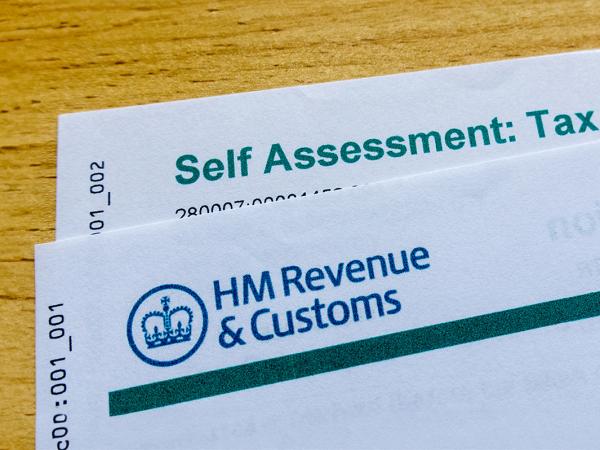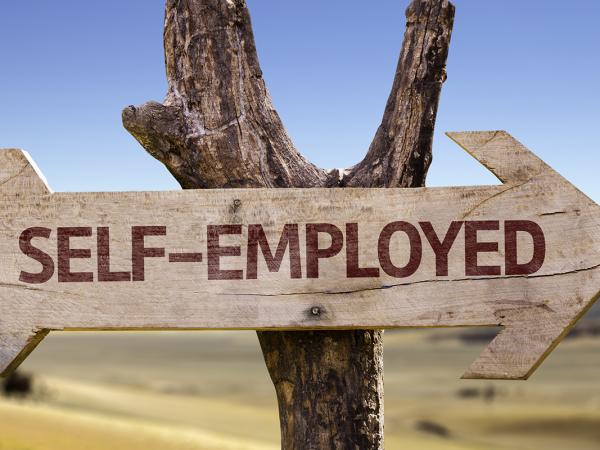Self Assessment: student loan repayments
Not everyone has to fill in a self assessment tax return each year. Common examples of when you are likely to need to fill in one are: if you are self-employed or have some other source of income which is not taxed before you receive it – for example, you rent out a property.
This page explains how repayments work under the self assessment tax system if you are on a Plan 1, Plan 2 or Plan 4 income-contingent (income-based) loan. If you have a postgraduate loan, see our separate page.
If you have gone to work abroad and are not in the UK tax system, you will need to make a payment arrangement direct with the Student Loans Company (SLC).

Content on this page:
Self assessment tax returns and student loans
Having a student loan is not in itself a reason for needing to complete a self assessment tax return. You usually only have to complete one if it is needed for your taxes and HM Revenue & Customs (HMRC) ask you to do so (or you notify them that you have a tax reason for needing one).
If you are required to complete a tax return, the form and the calculation also take into account your student loan repayments.
Calculation of Plan 1, Plan 2 and Plan 4 loans under self assessment
We explain the different repayment thresholds for Plan 1, Plan 2 and Plan 4 loans on our page on student loan repayments. The examples below illustrate how the calculations work under the different loan plans.
- Plan 1 repayment calculation under self assessment
-
Caitlin has a Plan 1 income-contingent student loan. She works part-time at Company A earning £15,500 a year. As she is not earning above the threshold (£24,990 for the 2024/25 tax year), she does not have to make repayments.
In April 2024, she gets another part-time job for Company B, earning £10,000 a year. Note: Company B is not in any way related to Company A.
Even though her total earnings are now £25,500 a year, neither employer has to deduct student loan repayments because each employment is within the £24,990 threshold.But Caitlin has to file a tax return for 2024/25 as she has also £2,000 of profits from freelance work (assuming Caitlin has already deducted the trading allowance when calculating her profits of £2,000). Her total earnings add up to £27,500 – that is £15,500 from Company A + £10,000 from Company B and £2,000 profits from her freelance work.
This is £2,510 above the £24,990 student loan repayment threshold, so she has to pay 9% x £2,510, £225.90, in student loan repayments through the self assessment system. - Plan 2 repayment calculation under self assessment
-
Karol has a Plan 2 income-contingent student loan. When he graduated, he took on part-time work with Company A earning £21,500 a year. As he is not earning above the threshold (£27,295 for the 2024/25 tax year), he does not have to make repayments.
In April 2024, he gets another part-time job for Company B, earning £6,000 a year. Note: Company B is not in any way related to Company A.
Even though his total earnings are now £27,500 a year, neither employer has to deduct student loan repayments because each employment is within the £27,295 threshold.
But Karol has to file a tax return for 2024/25 as he has also £2,000 of profits, after taking account of the trading allowance, from freelance work. His total earnings add up to £29,500 – that is £21,500 from Company A + £6,000 from Company B and £2,000 profits from his freelance work.
This is £2,205 above the £27,295 student loan repayment threshold, so he has to pay 9% x £2,205, £198.45, in student loan repayments through the self assessment system. - Plan 4 repayment calculation under self assessment
-
Poppy, who completed her undergraduate course in June 2023 and started her own business as a self-employed website designer in May 2024, needs to complete a self assessment tax return for the 2024/25 tax year. Poppy has no other taxable income or student loans apart from her Plan 4 student loan.
Poppy’s self-employment profits are £32,000, which is above the repayment threshold of £31,395 for the 2024/25 tax year. She will need to pay student loan repayments of £54.45 for the 2024/25 tax year through the self assessment process (calculated as £32,000 – £31,395 x 9%, so £605 x 9%).
If you have payrolled benefits in kind and have student loan repayments calculated through the self assessment system then your student loan repayments may been calculated incorrectly by mistakenly including your payrolled benefits in kind. If you have been affected by this HMRC should have written to you to explain what has happened and how you can claim a repayment of the overcharged student loan deductions. There is further guidance on how to complete your tax return if you have payrolled benefits in kind and student loan repayments on GOV.UK.
Unearned income
Unearned income includes, for example, interest from savings (this is not reduced by the personal savings allowance) or profits from letting out a property (after taking account of the property allowance).
If you have to fill in a tax return and you get more than £2,000 a year in unearned income, this affects how much you have to repay if your total income, including the unearned income, is above the annual repayment threshold.
Importantly, the £2,000 is ‘all or nothing’. This means that if you get unearned income of up to £2,000 in total a year, it is not taken into account at all; but as soon as you go over £2,000, the whole amount is taken into account.
Information on student loans needed for tax returns
When filling in your tax return, you will need to include the total of any student loan repayments you have already made under Pay As You Earn (PAYE).
If you are using HMRC online services to fill in your tax return, information on your student loan repayments may be pre-populated on your tax return automatically. Check that this information is correct with your own records. If it is not, you can change the pre-populated figures. Your tax return will then be processed with your figures which HMRC will check, so you should explain why you have entered different loan repayment amounts to HMRC in the additional information box on your return.
Also, although SLC usually get their information from HMRC, you might sometimes need to inform the SLC direct of PAYE repayments you have made, for example, if there is a delay in passing information from HMRC to the SLC.
Please note that student loan repayments are not tax-deductible expenses on your self assessment tax return.
Finding the information
We would recommend you always keep your payslips.
If you have a single job in a tax year, your form P60 from your employer at the end of the year will show how much has been deducted in repayments.
But if you move from one job to another, the form P45 your old employer gives you does not show the total deductions made in that employment. Your old employer will only have ticked a box on the P45 to indicate to your new employer that student loan repayments should continue being collected.
When you get to the end of the tax year, you will need to work out from the payslips from your old job how much your former employer deducted and add that figure to the amount shown on the form P60 from your new employer.
Payment due date under self assessment
Under self assessment, student loan repayments are due on 31 January following the end of the tax year. So, for the tax year ended 5 April 2024, your payment will be due on 31 January 2025.
Student loan repayments are not part of any payments on account you are due to make under self assessment, nor do you need to take them into account if you are working out whether you can claim to reduce your payments on account.
Student loan repayments under self assessment are included with your overall tax and National Insurance contributions (NIC) bill. So if you are late paying, you will face the same penalty for your student loan repayment as the rest of your bill. On our page Tax payment problems and debt, we provide some guidance on what to do if you are having difficulty paying.
Voluntary repayments and overpayments
You can make voluntary repayments direct to the SLC at any time. But if you do so, these payments will not reduce the amount that you have to pay under self assessment and should not be included on your tax return.
If you have made repayments direct to the SLC because you have been working abroad and then complete a self assessment return, HMRC will calculate your loan repayments without considering any direct repayments. We cover what you can do on our page: UK student loan repayments when going overseas.
If, however, you are employed and repayments have been deducted under Pay As You Earn (PAYE) by your employer, these do come off the amount due under self assessment.
However, in certain circumstances a situation may arise in that between the end of the last year and submitting your self assessment tax return you may have moved to repaying your loan directly to the SLC and have subsequently fully repaid your loan. If this is the case, your self assessment tax calculation may generate a student loan underpayment based on your income taxed through the self assessment system. If this happens and you have no further loan balance to repay, it may be advisable to not include information on the student loan repayments section of the self assessment tax return and explain in the additional information section that you have fully repaid your loan between the start of the tax year (6 April) and the date of submitting your tax return.
If you think the amount due under the self assessment calculation is too much – that is, you will then be owed money by the SLC, you can contact HMRC to apply for an informal ‘stand over’. This would allow you to pay a smaller amount in the meantime until the position is resolved.
If you do overpay your student loan through self assessment, then the overpayment will be allocated against any other outstanding amounts due such as income tax or National Insurance contributions. If there are no outstanding liabilities, then you can request the overpayment to be repaid.
Budget Payment Plans and student loan repayments
One facility HMRC offer for payment of all self assessment liabilities, including student loan repayments, is a regular direct debit known as a budget payment plan or ‘pay weekly or monthly’. This allows you to make regular payments, subject to certain conditions.
For student loan borrowers repaying through self assessment, there is, however, a possible disincentive to taking up a budget payment plan. As the effective date of repayment is treated as 31 January following the end of the tax year, your interest will still be clocking up on the outstanding student loan balance even though HMRC have your money early.
More information
There is information on GOV.UK on how to complete the student loan questions on paper and online self assessment tax returns.
The Student Loans Company (SLC) is responsible for all student loan repayments.
The Students Awards Agency Scotland website contains information about what types of funding you can apply for as a Scottish student.



